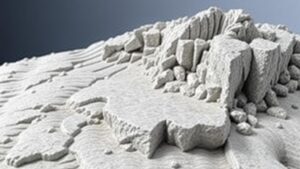How to Recover Copper Using Gravity Separation Techniques
Introduction
The recovery of copper, a vital resource in modern technology and construction, has undergone significant evolution through various extraction techniques. Among these, gravity separation techniques stand out for their efficiency and eco-friendliness. Gravity separation leverages the differences in density between copper and other materials to isolate the desired metal without extensive chemical usage. Historically, methods to recover copper date back to ancient civilizations, where techniques involved manual panning and the use of simple tools. Over time, technological advancements have introduced sophisticated machinery, enabling more efficient recovery processes, thus playing a crucial role in the mining and metallurgy industries.
Foundational Concepts and Equipment
Before delving into the specifics of gravity separation, its important to understand some foundational concepts and the equipment involved.
Key Terminology
Several terms are essential in the context of gravity separation:
- Density: The mass per unit volume of a substance, a critical factor in separation processes.
- Specific Gravity: A dimensionless quantity that compares the density of a substance to that of water, informing separation efficiency.
- Concentration Ratio: The ratio of the mass of the desired material to the mass of the undesired material after processing.
Common Equipment
The primary tools utilized in gravity separation processes include:
- Jigging Machines: These devices use a pulsating water flow to create stratification among particles based on density differences.
- Shaking Tables: Inclined tables that utilize gravitational forces and water to separate particles through their different settling rates.
- Spiral Concentrators: Helically-shaped devices that separate particles by passing slurry through a spiral channel, allowing for a continuous flow and separation process.
Each of these tools has unique features that cater to different conditions in copper recovery operations, emphasizing the necessity for tailored approaches based on specific site characteristics.
Step-by-Step Methodology
The gravity separation process for copper recovery can be outlined in several key steps:
1. Sample Preparation
Collect mineral samples from the mining site. Its essential to characterize the ore to understand the proportion of copper and the presence of gangue minerals.
2. Crushing and Grinding
Reduce the size of the ore to liberate copper particles. This is often done through grinding mills, which create fine particles that are essential for effective separation.
3. Classification
Separate the ground material by size using wet classifiers or screens to facilitate the next stages of separation.
4. Gravity Separation
Use jigs, shaking tables, or spirals to achieve the concentration of copper. Adjust variables such as water flow and incline to optimize recovery rates.
5. Concentrate Collection
Collect the concentrated copper material, which now contains a higher percentage of the desired metal compared to the original feed.
6. Tailings Management
Properly manage the waste materials (tailings) to minimize environmental impact and ensure compliance with regulations.
Advanced Techniques
In a professional setting, several advanced techniques can enhance copper recovery through gravity separation:
Equipment Calibration
Ensuring that machinery is appropriately calibrated is critical for maintaining optimal performance. Regular adjustments based on feed characteristics can significantly impact recovery rates.
Optimizing Water Usage
Utilizing the right amount of water can prevent overloading the equipment and support efficient particle separation. Data analytics can inform decisions about water management during operations.
Utilizing Froth Flotation Post-Separation
Combining gravity separation with froth flotation may further increase recovery efficiency, allowing operators to extract even finer copper particles that gravity alone might miss.
Legal, Ethical, and Safety Frameworks
Operating within legal and ethical boundaries is essential in any mining endeavor. Key considerations include:
Permits and Regulations
Before commencing operations, ensure compliance with local laws regarding mining and resource extraction. Obtain necessary permits that outline environmental protections and operational guidelines.
Health and Safety Standards
Follow established safety protocols to protect workers, including the use of personal protective equipment (PPE) and regular training on machinery operation.
Practical Field Guidance and Resources
Identifying optimal sites for copper recovery using gravity separation methods involves several considerations:
Site Evaluation
Look for geological indicators of copper deposits, such as alteration zones and the presence of specific minerals like chalcopyrite or bornite. Employ geophysical surveys and geological mapping to gather data.
Useing Techniques
Once an ideal site is identified, implement the recovery techniques with attention to the local geology and hydrology. Start with small pilot operations to assess the viability of different gravity separation methods.
Continuous Monitoring
Finally, maintain a routine monitoring system to evaluate recovery rates and adjust techniques accordingly to ensure continued efficiency and effectiveness.
In summary, recovering copper through gravity separation techniques is a blend of art and science, requiring an understanding of both the available equipment and the geological factors at play. By adhering to effective methodologies and legal standards, operators can achieve successful and sustainable extraction of this essential metal.



